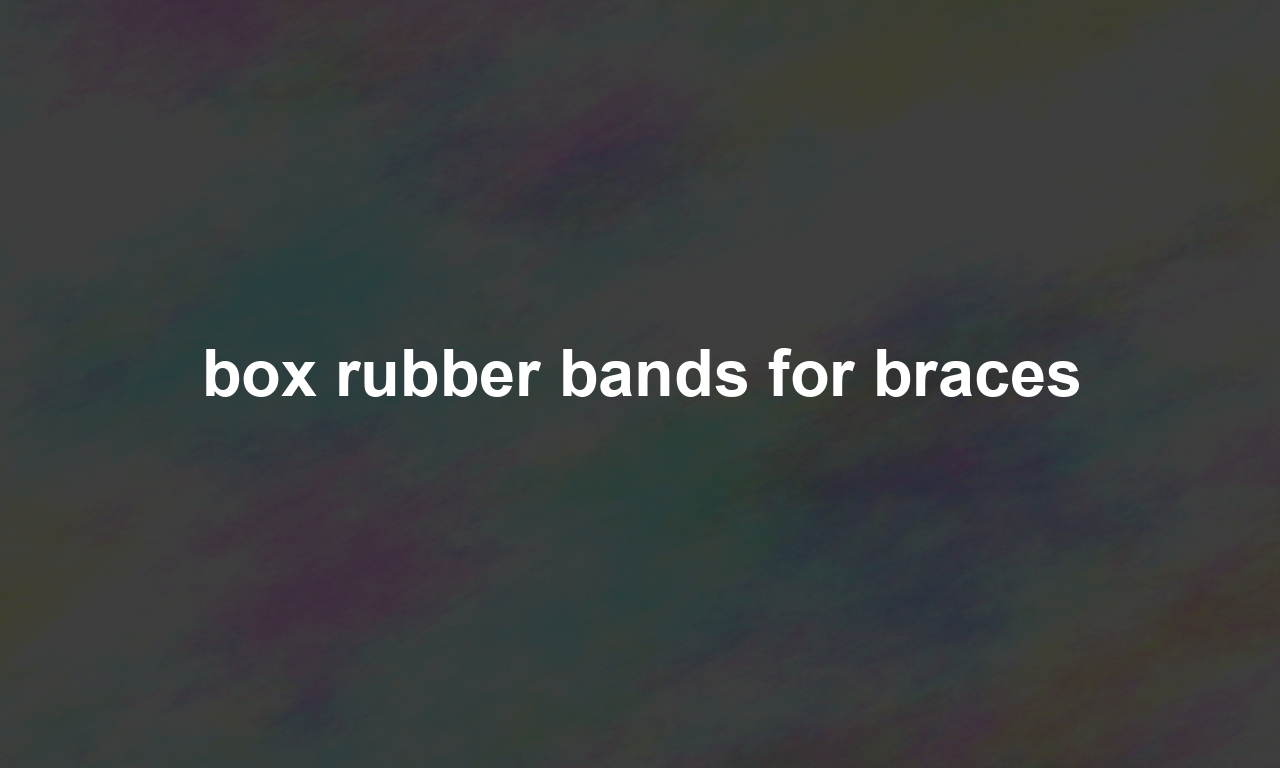Have you ever heard of box rubber bands for braces and wondered what they are or why they are needed? If you’re on an orthodontic journey, these small but mighty rubber bands could be a game-changer for your dental health. In this article, we’ll dive deep into the world of box rubber bands, answering some of the most common questions and providing expert advice on their use and benefits.
What Are Box Rubber Bands for Braces?
Box rubber bands, also known as interarch rubber bands, are tiny elastic bands used with braces to help correct misalignment issues. Unlike regular braces rubber bands, which connect to brackets on the same arch, box rubber bands are used to connect brackets on the upper and lower teeth in a rectangular shape, forming a “box”. This helps in fine-tuning the position of the teeth and jaws, ensuring everything aligns perfectly.
Why Are They Important?
The primary function of box rubber bands is to rectify bite issues, such as open bites, underbites, or overbites. They apply consistent pressure in specific directions to move your teeth and jaw into the desired positions. Here’s why they’re indispensable:
- Enhanced Bite: They help in correcting complex bite problems that braces alone might not be able to fix.
- Speed:** Wearing them as instructed can significantly speed up your treatment time.
- Improved Comfort: Proper alignment reduces discomfort and jaw pain over time.
How to Wear Box Rubber Bands
Wearing box rubber bands may seem tricky at first, but with a little practice, it becomes second nature. Here’s a quick step-by-step guide:
- Step 1: Wash your hands thoroughly.
- Step 2: Hook the rubber band onto the upper bracket.
- Step 3: Stretch it downward and attach it to the lower bracket, forming a box shape.
- Step 4: Check to ensure it’s secure and everything feels comfortable.
It’s crucial to follow your orthodontist’s instructions on how to wear them, including how long you should keep them on daily. Forgetting to wear your rubber bands can delay your progress.
Common Questions About Box Rubber Bands
How Often Should I Change Them?
Box rubber bands are made of elastic material and can lose their tension over time. It’s usually recommended to change them daily. Your orthodontist will provide specific guidance based on your treatment plan.
Are They Painful?
You may experience some discomfort initially as your teeth adjust to the new pressure. However, this usually subsides within a few days. If the pain persists, consult your orthodontist for advice.
Can I Eat with Rubber Bands On?
It’s generally advisable to remove the rubber bands while eating, unless specified otherwise by your orthodontist. After meals, ensure you reattach them immediately to maintain the pressure needed for effective treatment.
What If a Rubber Band Breaks?
If a rubber band breaks, replace it as soon as possible to make sure your treatment stays on track. Always carry some spare rubber bands with you for emergencies.
Tips for Success
To make the most of your box rubber bands and ensure a smooth orthodontic journey, consider these practical tips:
- Consistency is Key: Follow your orthodontist’s instructions to the letter.
- Always Carry Spares: Keep extra packs of rubber bands in convenient locations like your bag, car, or school locker.
- Establish a Routine: Incorporate checking and changing your rubber bands into your daily oral hygiene routine.
- Regular Check-ups: Don’t skip your orthodontic appointments. They are essential for monitoring progress and making necessary adjustments.
For more detailed advice on caring for your braces, check out these resources from the American Association of Orthodontists and the Colgate Oral Care Center.
Conclusion
Box rubber bands for braces might seem like just another small step in a long orthodontic journey, but their impact is substantial. Proper use can dramatically improve the effectiveness of your treatment, delivering the beautiful, aligned smile you’ve been working towards. While it may take some time to get used to wearing them, the benefits are well worth the effort. With consistent wear and a few helpful tips, your orthodontic experience can be both manageable and rewarding.

